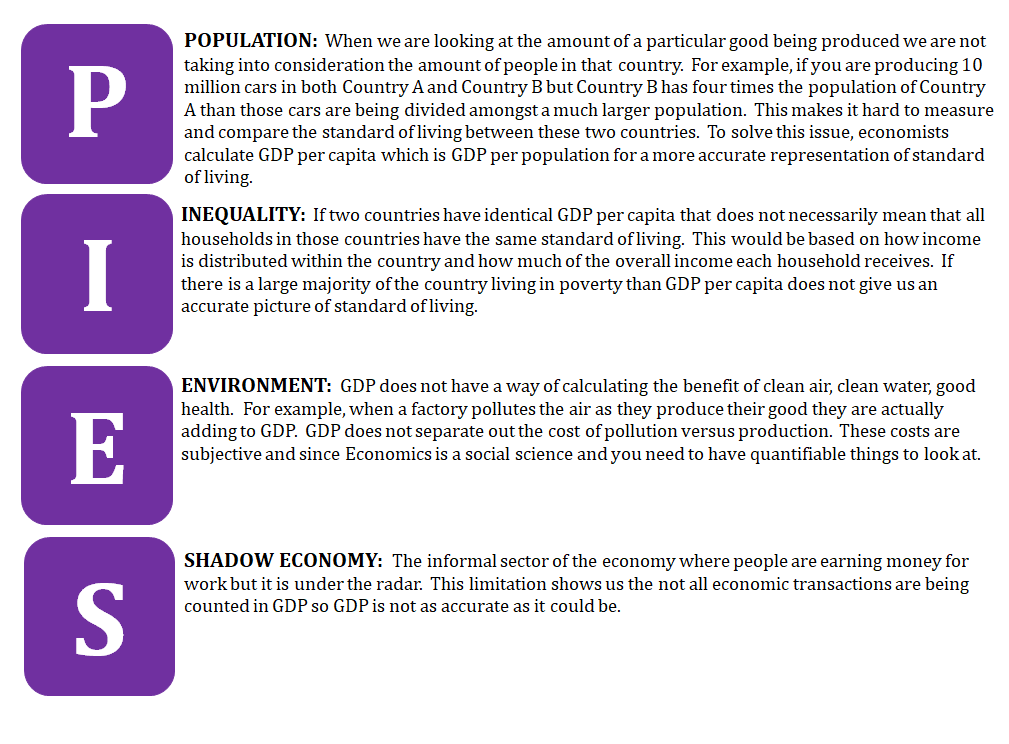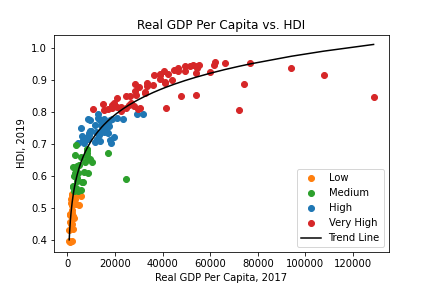J
Jeanne Stansak
dylan_black_2025
AP Macroeconomics 💶
99 resourcesSee Units
Uses of GDP in Economics
We've covered what GDP is, but how do economists actually use GDP?
Economists use gross domestic product (GDP) in a variety of ways as an economic indicator and comparative tool. One use of GDP is to measure the overall economic performance of a country. GDP reflects the amount of goods and services produced in the economy, and is often used as a broad measure of a country's economic growth.
Economists use GDP to track changes in the economy over time, and to compare the economic performance of different countries. For example, if a country's GDP is growing, it is generally considered to be a sign of a healthy and expanding economy.
GDP is also used to make international comparisons of economic performance. By comparing GDP data for different countries, economists can get a sense of how different economies are performing relative to one another. This can be useful for policymakers and businesses looking to invest in different countries.
Finally, GDP is used to help inform fiscal and monetary policy decisions. For example, if a country's GDP is declining, policymakers may implement expansionary fiscal or monetary policies to try to stimulate economic growth.
Overall, GDP is a widely used and important economic indicator that helps economists and policymakers understand and compare the economic performance of different countries.
However, GDP isn't perfect. We'll be discussing a few ways GDP falls short of a perfect economic indicator.
Limitations of GDP
There are 4 main areas of the limitations of GDP (Gross Domestic Product). In order to remember these we use the acronym P-I-E-S.

1. Population
When populations are different from country to country and the countries are producing a similar amount of a product than it gives us an inaccurate picture of the standard of living because one country is taking the same amount of production and distributing it amongst a larger population. For example, if one country is producing 15 million computers but has a population of 15 million than each person only has access to 1 computer but if another country produces the same amount of computers but has a population of 3 million than each person in that country has access to potentially 5 computers. This is why economists use GDP per capita as a better measure of standard of living. GDP per capita is the GDP of a country divided by its population. This helps economists understand if a country is truly rich, or is just very large.
Even GDP per capita, however, is not perfect. A country with high GDP per capita may be very rich on average, but may be corrupt or have harsh social conditions. Many organizations use the Human Development Index to show overall standard of living. Here's a graph of the two measures. You may notice that some of the highest GDP per capita countries actually have a lower HDI. This is because many of these countries are rich with oil, but are high in corruption.

2. Inequality
Inequality is also a limit to the use of GDP to measure the standard of living. Two countries can have the same GDP per capita but if income is not evenly distributed to all families then it is not an accurate measure of production and economic stability. In the unequal society, the market will be less resilient and the governing bodies will be less sustainable due to famine, conflict, and unemployment.
3. Environment
Another limitation regarding using GDP as a measure of the health of our economy is with regard to the various environmental situations. For example, if a factory is polluting during production they are still adding to GDP but GDP does not separate out the costs of this pollution from the actual production, even if the pollution is negatively impacting human life and ecology. These external costs of production are called externalities, and if you take AP Micro you'll learn about them in depth.
4. Shadow Economy
The final limitation has to do with the shadow economy. The shadow economy involves the production of items that are not reported so they are not counted in GDP. This shows us that GDP is not always accurate because there are some things not counted. An obvious example of the shadow economy is the black market which are aspects of the economy deemed illegal and therefore excluded from formal reporting, but there are many other aspects of the shadow economy that are perfectly legal.
Browse Study Guides By Unit
💸Unit 1 – Basic Economic Concepts
📈Unit 2 – Economic Indicators & the Business Cycle
💲Unit 3 – National Income & Price Determination
💰Unit 4 – Financial Sector
⚖️Unit 5 – Long-Run Consequences of Stabilization Policies
🏗Unit 6 – Open Economy - International Trade & Finance
🤔Exam Skills
📚Study Tools

Fiveable
Resources
© 2025 Fiveable Inc. All rights reserved.